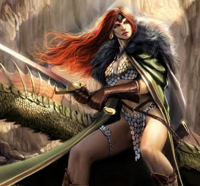- You are here:
- Home »
- Writing Craft
- » Are your scenes Active or Passive?
Are your scenes Active or Passive?
 Does your protagonist drive your plot, or is he just along for the ride? It’s usually easy to spot: the plot or other characters advance the story and the protagonist simply reacts to events.
Does your protagonist drive your plot, or is he just along for the ride? It’s usually easy to spot: the plot or other characters advance the story and the protagonist simply reacts to events.
This is ok in moderation. We can’t expect the hero to do everything. Often, he isn’t in control of events, certainly isn’t omniscient, and ends up in reactionary mode from time to time. You can still write a dramatic scene around this. Sometimes, secondary characters get to make the discoveries or decisions, get to move to center stage so that we can develop their character. No, I’m talking about those times when the hero can lead the scene, but doesn’t, due to an oversight or laziness on the author’s part.
I’ve been reworking scenes in which I failed to seize opportunities to show my hero in action. The protagonist, and maybe one or two other main characters, should carry the bulk of the action, since the reader has the most invested in them. No one cares about the minor character to stage left that says his piece and leaves, or dies horribly to heighten the risk to our hero. Now rewritten, my scenes are considerably more interesting, and advance the plot more dramatically, when my hero leads.
As an example, I just rewrote a scene in which a dead body is discovered by a secondary character, who proceeds to protect my heroine by pushing her away, sheltering her. What was I thinking? I thought this a believable act on his behalf. In reality, I just lost a ton of terror-filled drama. In the rewrite, she stumbles over the corpse. The reader is deluged with a torrent of raw emotion: shock, disgust, terror, loss. Then she fights attempts to lead her away, chiding her friend for treating her like a baby, and both of them narrowly avoid becoming victims to the killer. Which version would you prefer to read?
Sounds easy, but I have read a number of books or manuscripts where the author seems content with a passive plot. Put your hero on the edge, put him in danger, make him emotionally vulnerable, let him be hurt and get back up. He should disagree, argue, go against the grain, or have his own agenda. An active plot means so much more than physical action.
Take a scene which you consider slow, on the cutting block, or one in which your protagonist is reactionary. Now rewrite it centered on the hero. Let him make the first move, make the discovery, take control. This is an effective way to spice up one-sided, information dump conversations. Avoid your hero simply taking it all in, nodding his head, asking passive leading questions. Instead, let him ask awkward questions, interrupt the speaker, challenge him, argue, contradict. Try it. The results are totally worth it.
